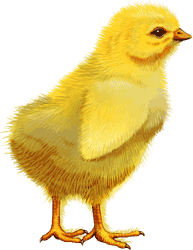Today the human race causes more suffering than has been experienced in the entire accumulated history of the Earth! If we opened ourselves to feeling this vast of ocean of misery we would commit to ending it today. Factory farms are the biggest offenders, confining billions of feeling, sensitive, intelligent beings to a living hell. But there is hope, we humans can become the truly compassionate beings we where meant to be.

Since chicken and pig factory farms actually exist behind closed doors in Sonoma County we will focus on this one issue at this time. Remember as you read, just one factory farm represents unimaginable suffering, there are almost 465 billion animals killed yearly to support the meat-habit! Do you want to be part of that?
Chicken and Egg Farming: Abusive Industries
This article is courtesy PETA.org's fact sheet.
Chickens are inquisitive, intelligent animals who, according to animal behaviorist Dr. Chris Evans of Australia's Macquarie University, “are good at solving problems.” He explains that chickens are able to understand that recently hidden objects still exist, a concept that small children are unable to master. Discussing chickens' capabilities, he says, “As a trick at conferences, I sometimes list these attributes, without mentioning chickens, and people think I'm talking about monkeys.”(1)
In nature, chickens form friendships and social hierarchies, recognize one another and develop a pecking order, love and care for their young, and enjoy dust-bathing, making nests, and roosting in trees. Chickens raised for meat and eggs are unable to engage in any of these activities.
Chickens Raised for Meat
Approximately 9.5 billion chickens are raised and killed for meat each year in the United States.(2) The industry refers to these chickens as “broilers” and raises them in huge, ammonia-filled, windowless sheds where artificial lighting is manipulated to make birds eat as often as possible.(3)
To keep up with demand and reduce production costs, genetic selection and a steady dose of growth-promoting drugs are used to ensure large, fast-growing birds. Today, most chicks take only six to seven weeks to reach “processing” weight, and chickens raised for meat weigh an average of one-fifth more than those raised in the 1950s.(4) The shift in consumer habits “from eating whole chickens to chicken parts” has encouraged the industry to raise birds with “thicker breast[s], fatter wings and chubbier drumsticks,” according to the Associated Press.(5) Skeletal problems, especially in the legs, are common among these birds, and many die from ascites, a disease thought to be caused by the inability of birds' hearts and lungs to keep up with their rapid skeletal growth. According to one study, “[T]he bird's demand for oxygen exceeds its cardiopulmonary capacity.”(6,7)
Chickens Raised for Their Eggs
About 245 million hens are raised for eggs in the U.S., and 98 percent spend their lives in battery cages, stacked tier upon tier in huge warehouses.(8) Confined seven or eight to a cage, these birds don't have enough room to turn around or even spread one wing. Millions of day-old male chicks are killed (usually in a high-speed grinder called a “macerator”) every year because they are worthless to the egg industry.(9,10)
To prevent stress-induced behaviors caused by overcrowding, such as pecking cagemates to death, hens are kept in semi-darkness, and the ends of their beaks are cut off with a hot blade, no painkillers are administered during this painful process.(11) The wire mesh of the cages rubs off their feathers, chafes their skin, and causes their feet to become crippled. Farmers induce greater egg production through “forced molting”“shocking hens” bodies into another egg-laying cycle by starving them for days and keeping them in the dark, a stressful situation that causes them to lose feathers and weight.(12)
Broken bones are also common among these birds, who “suffer significant osteoporosis,” according to the International Veterinary Information Service.(13) A study published in Poultry Science explained that “high production hens” structural bone is mobilized throughout the laying period in order to contribute to the formation of eggshell.“(14)
Although chickens can live for more than a decade, hens raised for their eggs are exhausted, and their egg production begins to wane when they are about two years old.(15,16) When this happens, they are slaughtered. More than 100 million “spent” hens are killed in slaughterhouses every year.(17)
Slaughter
The lives of chickens raised for meat and eggs end with a grueling trip to the slaughterhouse. Before the terrifying journey, chickens are caught by workers and placed into crates. One reporter at a Delmarva chicken farm described the “catching” process as “a half-dozen men grabbing [chickens] by their feet, shoving them into the drawers of 6-foot high crates. The men can catch more than 6,000 birds in an hour.”(18) One industry study of catching practices concluded that “[t]he number of freshly broken bones found in live birds prior to slaughter and the number of old healed breaks found at slaughter are unacceptably high.”(19)
Once at the slaughterhouse, the birds are dumped from their crates and hung upside-down in shackles, further injuring their legs, which are already tender and often broken. Their throats are slit open by machines, and they are immersed in scalding hot water for feather removal. They are often conscious throughout the entire process. Often, because their bones are so brittle from egg production that the electric current would cause them to shatter, hens are not even stunned before their throats are slit.(20)
You can read poultry-worker whistleblower statements about catching and slaughter at GoVeg.com.
Antibiotics Lead to Drug-Resistant Bacteria, Human Illnesses
Factory farms simply cannot raise billions of animals per year without using drugs that allow the animals to survive cramped and unhealthy conditions that would otherwise kill them. Millions of pounds of antibiotics are fed to chickens, who metabolize only about 20 percent of the drugs fed to them: The remaining 80 percent ends up in their feces.(21) The 3 trillion pounds of waste produced by factory-farmed animals every year is usually used to fertilize crops and subsequently ends up leaching into waterways—along with the drugs and bacteria that it contains.(22)
Environmental and human health problems are developing as a result of this unchecked use of antibiotics. A U.S. geological study found 14 antibiotics used in animal agriculture and human medicine in almost 50 percent of the waterways tested.(23)
Arsenic is approved for use in animal feed, but chickens do not eliminate all of it in their waste. The United States Department of Agriculture reports that “young chickens contain three to four times more arsenic than other poultry and meat.”(24) Several lawsuits have been filed in Arkansas on behalf of residents of a town with the second-largest chicken population in the U.S. Residents have been diagnosed with arsenic poisoning that has led to blood diseases and extremely rare types of cancer. The defendants are poultry producers who have been using an antibiotic (specifically, inorganic arsenic) in chicken feed that becomes toxic in litter, which was spread on nearby crops as fertilizer.(25)
One scientist examined poultry workers” health and found that more than 40 percent of the test subjects were infected with campylobacter and that the bacteria was “supersized” and resistant to antibiotics. She remarked, “There have been a lot of stupid things we've done as a species—but this (giving animals antibiotics) has to be one of the most stupid.”(26) A Consumer Reports study of nearly 500 supermarket chickens found campylobacter in 42 percent and salmonella in 12 percent—and up to 90 percent of the bacteria were resistant to antibiotics.(27)
The Centers for Disease Control and Prevention estimates that there are 76 million instances of foodborne illness and more than 5,000 food-related deaths annually in the U.S.(28) Every year, there are more than a million salmonella-related cases of food poisoning, and 600 of them are fatal.(29) Eggs with salmonella pose a threat to one out of every 50 people each year.(30)
In addition to their toxic effects on the human body, meat, eggs, and dairy products contain large amounts of harmful substances such as cholesterol, saturated fats, and concentrated protein. For example, one large egg contains more than 200 milligrams of cholesterol, and chicken contains the same amount of cholesterol as beef.(31,32,33)
What You Can Do
The best thing that you can do for chickens is to stop eating them and spread the word to your friends about the health, environmental, and animal-welfare problems caused by raising chickens for food. Eat tofu scrambler instead of scrambled eggs, try egg replacer in your baked goods, and marinate tofu at your next barbecue. Call 1-888-VEG-FOOD or visit GoVeg.com for a free vegetarian starter kit.
You can also support legislation that abolishes battery cages and encourage the poultry industry to use controlled atmosphere stunning to kill chickens instead of the current cruel methods.
References
1)William Grimes, “If Chickens Are so Smart, Why Aren't They Eating Us?” The New York Times, 12 Jan. 2003.
2)Food and Agriculture Organization of the U.N., “Chicken Meat, Slaughtered/Prod Animals (1,000),” FAOSTAT Database, 2002.
3)Victor G. Stanley et. al., “Relationship Between Age of Commercial Broiler Chickens and Response to Photostimulation,” Poultry Science, 76 (1997): 306-310.
4)Cindy Skrzycki, “Old Rules on Poultry Categories May Fly the Coop,” The Washington Post, 7 Oct. 2003.
5)“As Demand Grows, so Do Chickens,” Associated Press, 2002.
6)Mench and Siegel.
7)J.M. Balog, “Effect of Dietary Aspirin on Ascites in Broilers Raised in a Hypobaric Chamber,” Poultry Science, 79 (2000): 1101-1105.
8)Joy A. Mench and Paul B. Siegel, “Poultry,” South Dakota State University, College of Agriculture and Biological Sciences, 11 Jul. 2001.
9)Mench and Siegel.
10)Dr. John Summers, “Sexing Chicks as 7-Day-Old Embryos,” Poultry Industry Council Factsheet #90, 1996.
11)Mench and Siegel.
12)Ibid.
13)M. Gentle, “Comparative Vertebrate Nociception and Pain,” Roslin Institute, Scotland, 3 Dec. 2002.
14)T.G. Knowles and L.J. Wilkins, “The Problem of Broken Bones During the Handling of Laying Hens—A Review,” Poultry Science, 77 (1998): 1798-1802.
15)Molly Snyder Edler, “Chicken Love Leads to Book Deal,” OnMilwaukee.com, 26 Sep. 2002.
16)Tuan A. Meunier et al., “Commercial Egg Production and Processing,” Department of Curriculum and Instruction, Perdue University, 4 Apr. 2003.
17)Barbara Olejnik, “Dwindling Spent Hen Disposal Outlets Causes Concern,” Poultry Times, 15 Sept. 2003.
18)Amy Ellis Nutt, “In Soil, Water, Food, Air,” Star-Ledger, 8 Dec. 2003.
19)Knowles and Wilkins.
20)Mench and Siegel.
21)Nutt.
22)Ibid.
23)Ibid.
24)Jane E. Allen, “Elevated Levels of Arsenic Discovered in Young Chickens,” Los Angeles Times, 19 Jan. 2004.
25)“Arsenic Allegations,” MeatNews.com, 16 Dec. 2003.
26)Nutt.
27)“Food Safety. Test. Of Birds and Bacteria,” Consumer Reports, Jan. 2003.
28)Paul S. Mead et al., “Food-Related Illness and Death in the United States,” Emerging Infectious Diseases, 15 Sep. 1999.
29)Nutt.
30)Centers for Disease Control and Prevention, “Salmonella Enteritidis,” Disease Information, 7 Mar. 2003.>\
31)USDA National Nutrient Database for Standard Reference, “Egg, Whole, Raw, Fresh,” 16 Jul. 2003.
32)USDA National Nutrient Database for Standard Reference, “Chicken, Broilers or Fryers, Meat and Skin, Raw,” 16 Jul. 2003.
33)USDA National Nutrient Database for Standard Reference, “Beef, Carcass, Separable Lean and Fat, Select, Raw,” 16 Jul. 2003.
Home | Healthy Nutrition | The Environmental Crisis | Animal Suffering | Useful Links | Join Us


